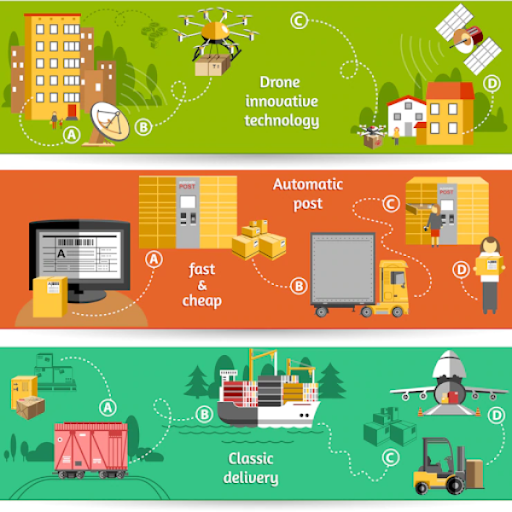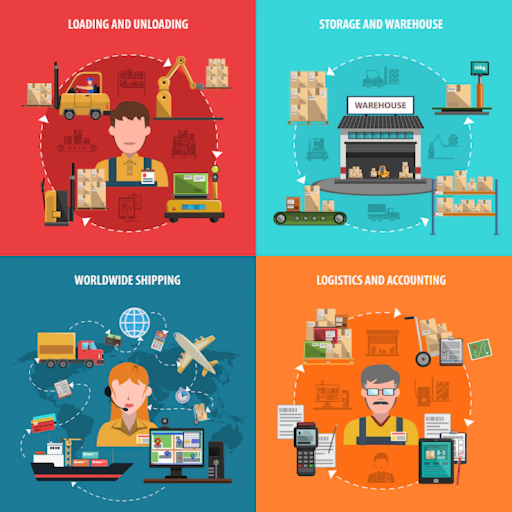Introduction: Businesses have always been interested in digitizing their operations. But the question has always been how to do it effectively and cost-effectively. Old ways of doing things are no longer working, so you need to find a new way to organize everything. That’s where digital transformation comes in.
Digital Transformation is the process of making your business work better through technology and change. And it requires a change in mindset, too—a shift from traditional thinking to digital-first thinking. You don’t have to be an expert on all the aspects of digital transformation; we’ve put together an overview that will help you get started.
What is Digital Transformation?
Digital transformation is an ongoing process that affects all aspects of logistics business. It involves the implementation of digital technologies to improve efficiency, reduce costs, and create new forms of value for customers. Digital transformation is about leveraging technology to create a better customer experience, enable faster decision making, and enable more effective collaboration between multiple stakeholders.
Digital transformation can be seen as the integration of digital technologies into all areas of a business. It is a process of changing the way a business operates, creating new digital value and increasing organizational capability. It involves the introduction of new digital processes, products, systems and strategies to increase efficiency, reduce costs, and create new value across the entire business.
At its most basic, digital transformation enables businesses to create new value by combining existing digital technology with innovative processes and business models. It requires a company to adopt new technology and learn how to use it in order to create new products and services or find new ways to make existing products and services more valuable. This process of digital transformation can be used to improve customer service and reduce costs by automating tasks, enabling faster decision making, and ensuring better collaboration between multiple stakeholders.
Benefits of Digital Transformation for Logistics Businesses
The world of logistics has been rapidly changing due to digital transformation. The introduction of new technologies and the need to meet customer demands for faster and more efficient delivery have led to an increase in digital transformation for logistics businesses. As such, it is important for logistics businesses to understand the impact and importance of digital transformation in order to remain competitive.
There are a variety of benefits associated with digital transformation for logistics businesses. One of the key advantages is that businesses are able to use new technologies to optimize their operations. This includes the use of automation, robotics and artificial intelligence. Automation can help businesses to streamline their operations and increase efficiency, while robotics can help to reduce labor costs. Artificial intelligence can help businesses to make better decisions more quickly, as well as gain insights into customer behaviour and preferences.
In addition to optimizing operations, digital transformation can help businesses to stay connected with their customers. This includes the use of customer relationship management (CRM) systems, mobile applications and marketing automation. Businesses can use these technologies to quickly respond to customer inquiries, provide timely updates and develop relationships with customers. This helps to improve customer loyalty and engagement, which is beneficial for businesses in the long run.
Why You Should Use Digital Transformation To Grow Your Logistics Business.
The term digital transformation has been used to describe a wide range of transformations that business owners and managers should consider improving their business efficiency and performance. This term refers to changes in how businesses operate, process information, create new customer models, and develop new applications.
Digital transformation can be seen in two main phases:
1) basic or traditional
2) cloud-based or mobile-first.
Digital Transformation allows businesses to move away from an age-old model of delivering goods and services through physical locations and towards a more customer-centric model where customers are connected to businesses through the internet. This way of operating allows companies to focus on their customers rather than their production processes or products.
What are the Benefits of Using Digital Transformation to grow your logistics business?
Some of the benefits of using digital transformation include:
- Increased efficiency – By using digital tools, businesses can reduce costs and speed up their workflow. For example, by automating processes such as data entry, data analysis or customer service, you can free up time for other areas of your business.
- Improved communication – By developing better
SEO on-page marketing campaigns or creating user interfaces that are easy to use, you can increase interaction between customers and employees. This way, you can improve employee communications skills while reducing the amount of time spent on administrative tasks.
- Creation of new customer models – By using digital tools, you can create new customer models that are more likely to be loyal and repeat customers. This way, you can improve your sales and marketing efforts by targeting new customers rather than just existing ones.
- New applications – By developing innovative mobile applications or creating web-based applications, you can develop new business models that are difficult to replicate elsewhere. This way, you can stay ahead of the curve and remain competitive in the market.
There are several digital tools that you can use to create new customer models. These include developing innovative mobile applications, creating web-based applications, or using digital tools to target new customers. By using these tools, you can improve your sales and marketing efforts and stay ahead of the competition.
How to Create an Infrastructure for Digital Transformation.

There are several ways to create a strong infrastructure for digital transformation. One way is to use technology to improve operations. For example, you can use software that allows you to track and analyze data in real time, which can help you make better decisions about how to run your business.
You can also use technology to enable compliance with regulations. For example, using blockchain technology can help you streamline the process of verifying customer identities and addresses. However, if you want to expand your website in order to boost sales and expand your company then
Incrementors Sacramento marketing services can support you in growing your company by enhancing your online presence.
How to Use Technology to Improve Operations
One way that businesses can use technology to improve their operations is by using it to enhance communication between customers and employees. For example, you can install headsets so that customers can talk directly with employees instead of having to wait in line or go through a middleman. You can also implement video chat systems so that employees can communicate with customers during work hours. And finally, you can use software that sends alerts when there are problems with your equipment or when there are changes in market conditions that could affect your business.
How to Enable Compliance with Regulations.
Another way that businesses can improve their operations is by enabling compliance with regulations. For example, you could install software that helps you track environmental or safety violations on your premises or provide customer service so that they can resolve any issues quickly and easily. You might also want to develop policies and procedures related to digital transformation so that everyone who works at your company is familiar with the new system and able to take advantage of its benefits instantaneously.
How to create a Culture of Innovation.
Another way that businesses can create a culture of innovation is by creating an environment that encourages employees to think outside the box and come up with ideas for improving their business. For example, you can provide opportunities for employees to get involved in the company’s digital transformation projects. You can also offer training on digital Transformation so that everyone in your company is familiar with how it works and can take advantage of its benefits instantaneously.
How to Enhance the Customer Experience Through Digital Transformation.
One of the key ways to improve customer service is by using digital channels to interact with customers. This can be done through websites, apps, or even in-store. By using digital channels to connect with customers and answer their questions, you can create a more positive customer experience. Additionally, you can use digital channels to improve worker productivity by providing training and support that helps them work smarter rather than harder.
How to Improve Worker productivity.
Another way to improve worker productivity is by using technology in conjunction with other business functions. For example, if your logistics Business uses GIS software to track stocks and inventory, you can use that data to help employees optimize their work schedule. By harnessing the power of technology and integrating it into your business routines, you can help reduce stress and increase worker efficiency. Subsection 3.3 How to Improve Efficiency in your Logistics Business.
For your Logistics Business to be efficient and successful, you must take steps to improve the flow of goods and services between your company and its customers. The use of tools like GPS tracking or driver tracking systems can help keep track of where your products are at all times, making it easier for customers and employees alike to find what they’re looking for quickly and efficiently.
Challenges Faced by Logistics Businesses with Digital Transformation
Digital transformation has become an integral part of the modern business landscape, and this is no different within the logistics industry. With the emergence of new technologies, such as Internet of Things (IoT), Artificial Intelligence (AI), and blockchain, logistics businesses are being presented with a range of opportunities, but also, challenges. This article is intended to discuss the challenges faced by logistics businesses during the digital transformation journey.
One of the main challenges faced by logistics businesses during digital transformation is the increased complexity of supply chain operations. While digital tools and technologies can help improve efficiency and reduce costs, they also introduce new layers of complexity and the need to manage, integrate, secure, and govern all the disparate systems. This means that logistics businesses must have sufficient knowledge, skills, and resources in place to not only manage the operations, but also be able to adapt and update their digital strategies as the market and technology evolves.
Artificial Intelligence
The introduction of artificial intelligence (AI) into the logistics industry has been a game-changer for businesses looking to increase efficiency and productivity. AI provides the ability for machines to mimic human cognition, allowing businesses to streamline processes, automate tasks, and drive innovation. AI-powered logistics solutions provide predictive analytics, enabling businesses to better anticipate and meet customer demands while also improving the accuracy of their supply chain and delivering a better customer experience.
Another key benefit of AI lies in automated decision-making and predictive analytics. By utilizing AI’s predictive capabilities, logistics businesses can take proactive steps in anticipating and responding to customer demand, as well as accurately predicting which products will be in high demand. AI can also help businesses to accurately forecast stock levels, ensuring that the right inventory is in the right place at the right time. These predictive capabilities can go a long way toward helping to ensure that businesses remain competitive in today’s ever-changing market.
Ultimately, AI is pushing the logistics industry forward; enabling businesses to streamline processes, reduce costs, and improve customer satisfaction in order to remain competitive. With AI-driven solutions, businesses have the ability to make data-driven decisions in an increasingly complex and dynamic market. As AI continues to evolve and become more sophisticated, it’s clear that businesses that don’t embrace this digital transformation could risk being left behind.
Conclusion
In conclusion, digital transformation is becoming increasingly important for logistics businesses. By implementing digital technologies such as artificial intelligence, robotics, and automation, businesses can increase efficiency and improve customer experience. However, digital transformation also presents some challenges that businesses must be prepared to face. The use of digital transformation can lead to improved operations for logistics businesses, but business leaders must stay informed about the latest digital trends and technologies in order to maximize its potential. As the digital landscape continues to evolve, logistics businesses that implement digital transformation successfully will be better positioned to take advantage of new opportunities and stay ahead of the competition.



